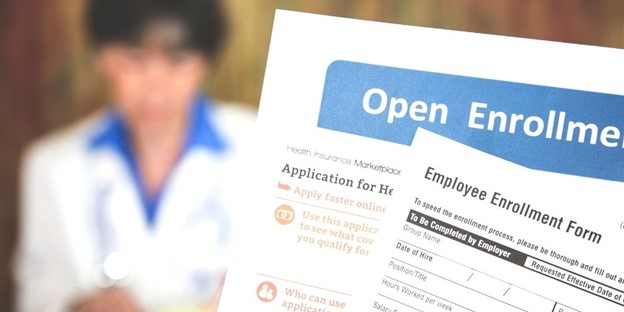By Mark Olsen, Managing Director at PlanPILOT
Over the past decade or so, plan sponsors of retirement programs have sought to strengthen the company benefits provided to participants by adding features to both encourage participation and assist their employees with preparing themselves financially for retirement.
One of the more popular additions to programs, such as 401(k) and 403(b) plans, is the inclusion of “retirement readiness” calculators, which allow a plan participant to input data specific to their own financial situation (including retirement plan account balances, payroll deduction contributions, employer match, years to retirement, and expected rates of return) in order to obtain a “financial wellness” score.
This analysis and “score” is designed to indicate to the participant how well (or not) they are saving and preparing for their future retirement. If there is a deficiency, the participant in theory would be able to determine how much they need to increase their contributions so their risk profile achieves a favorable score, or closer to “retirement readiness.”
Room for Improvement
While even simple analysis and guidance can be helpful to a worker-participant, many retirement-readiness calculators may be inherently flawed or misleading as to the score received and the results implied. For example:
- The scores may be wildly inaccurate if the data only includes the account within the employer plan (a plan-only calculator). Depending upon the provider of the plan, many calculators simply take the balance of the participant account, incorporate the contribution amounts, years to retirement, and an expected return based upon the investment mix selected. Default assumptions may be over-optimistic.
- Participants may have one or several other retirement-based accounts outside the plan that are not included; therefore, the results may show inadequate readiness based upon excluding these outside resources.
- The survey questions may not address or require input on other significant aspects of the participant’s financial life. This includes payoff of a home mortgage, credit card usage and other consumer debt, and significant “spending spikes” that may derail planned contributions at a later date, such as college financing for children, large medical expenses, or unexpected loss of employment.
Further, many participants may have little sense or understanding about their lifestyle spending levels (even in the present, much less the future), as well as critical input factors, such as inflation or what their Social Security benefits may be or when they are claimed.
- The inputs may only request static data based upon current abilities to contribute to the retirement plan account. For example, a participant in their early years of employment may only earn modest compensation, allowing only for small monthly contributions to their retirement, whereas later in their career (with advancement and higher compensation) greater contributions (and employer match) might be possible.
- There are little to no industry standards that adequately address or quantify what it means to be “retirement ready,” and there can be wide disparity among providers of such calculators. This can vary widely among demographic sectors and areas of the country.
Work-Force Demographics Can Impair Effectiveness
The composition of the workforce can significantly impact whether a program retirement calculator is accurately portraying readiness. Younger participants earning higher compensation in a technology company may score higher in readiness than older workers earning and contributing less in more traditional blue-collar companies.
In addition, plan sponsor management may have different perceptions of the effectiveness of their plans and employee readiness scores. For example, a low aggregate readiness score for an older, more conservatively invested workforce may dissuade plan sponsors from allocating further resources to the plan. Conversely, a high aggregate score for a newer, younger workforce (who have yet to weather a severe market downturn after selecting aggressive investment holdings with higher potential returns) might indicate “all is well” and the employer fails to understand the nuances behind the favorable data.
Inadequate Readiness May Not Lead to Increased Participation
A fair argument may be made by plan sponsors that imperfect guidance may be better than none at all; at least participants have the ability to understand simple reasoning why saving for retirement is important. Such employers might believe that as long as they have a retirement plan and a readiness calculator, that should be sufficient.
What is not well understood, however, is that even with an insufficient “readiness score,” participants may not have the ability to increase contributions or be reluctant to accept greater investment risk for potential better returns to help boost their score. A Paychex survey of over 800 employers indicated that while over 73% of workers believed they should be saving more for retirement, nearly 80% had no capacity to do so and that nearly a third of workers surveyed are not even concerned about retirement prospects so may not even bother addressing the issue. Interestingly, over 80% of those surveyed believe their retirement benefits were inadequate.
Achieving Accurate Data Requires Robust Tools
The success of a company retirement plan in truly serving and helping participants greatly depends upon providing sufficient tools and robust features within the plan to boost interest in participation and deliver meaningful results. Oftentimes, employers may lack the insight and understanding behind retirement plan programs to be able to craft a plan that truly suits their workforce and resources. Consulting with an experienced specialist in this area may yield customized solutions that result in a happier, more productive workforce.
Utilizing Professional Assistance
PlanPILOT is uniquely positioned to help employers customize and design benefit plans that meet your unique needs and objectives. If you’re ready to upgrade to a new standard for your benefit planning, reach out to us at (312) 973-4913 or send an email to mark.olsen@PlanPILOT.com to learn more about how we can customize our services and your plan to fit your unique needs.
About Mark
Mark Olsen is the managing director at PlanPILOT, an independent retirement plan consulting firm headquartered in Chicago. PlanPILOT delivers comprehensive retirement plan advisory services to 401(k), 403(b), and 457 plan sponsors. His specialties include plan governance, investment searches, investment monitoring, and plan oversight. Mark is recognized as a leader in the industry and speaks at national conferences, including those organized by Pensions & Investments, and CUPA-HR.





